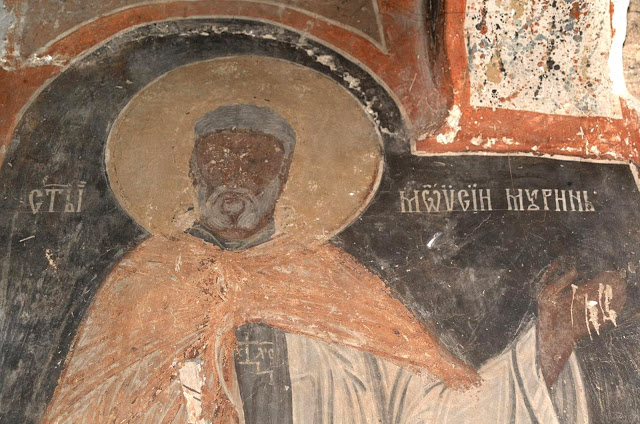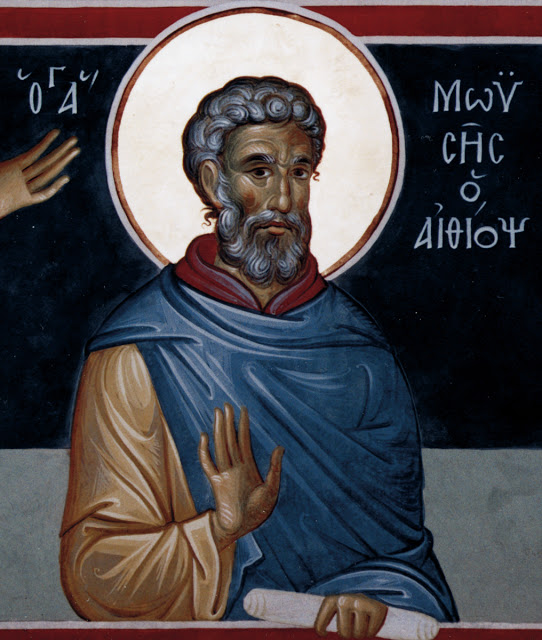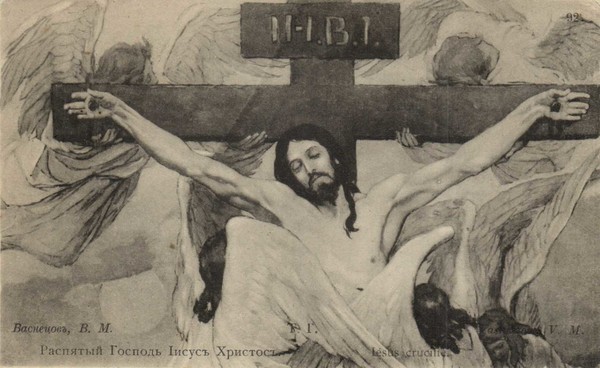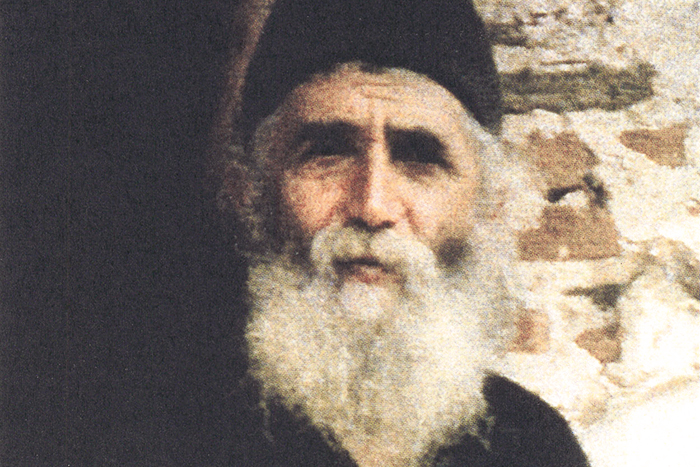St. Moses is a perfect example, like St. Mary of Egypt, that sometimes the greatest sinners can become the greatest saints, by means of deep and sincere repentance. Moses had been a murderer, a thief, and a very violent person. Therefore, St. Moses is a marvelous model for us of the power of repentance and of God’s forgiveness, especially for those who might feel that they are too sinful to be reconciled to God and His Holy Church, because they have strayed and fallen into sin. The “righteous” can be further from God than the sinner, because the “righteous,” like the pharisee and the elder son of Jesus’ parables, do not see their sins, and therefore are filled with pride instead of humility. In contrast, like Jesus’ prodigal son and tax-collector, the great sinner who repents can grow ever closer to God by means of his continued sincere repentance and consequent humility and self-abasement. St. Moses is just such a person.
St. Moses lived in Egypt during the fourth century. He was a very dark-skinned Ethiopian, and thus is also called St. Moses the Black. In his youth he was a slave of a high-ranking man, but after Moses committed a murder, his master banished him. Filled with much anger and bitterness, Moses joined a band of thieves who attacked, robbed and murdered travelers in the Egyptian desert. His band of brigands chose Moses as their leader because of his enormous physical strength and readiness to sin. People were afraid at the mere mention of his name.
After a number of years of this sinful life, by the grace of God, Moses repented, abandoned his band of robbers and went to one of the desert monasteries. He had to weep and beg for a long time before the brethren believed he was sincere, and finally they accepted him. He wept bitter tears of repentance for his sinful life, and became very obedient to the abbot, his spiritual father and confessor, Abba (Father) Isidore, a wise and experienced spiritual guide. After a while, Moses withdrew to a solitary cell, where he prayed, fasted, and continued to struggle against the passions and the violent attacks of demons, with the guidance of Abba Isidore, who taught him how to pray all night and to struggle against the demons. His long struggle with the passions and demons was necessary in order to become completely cleansed of his former sins. In his battle between the legions of demons and angels, Abba Isidore assured Moses that the angels would prevail.
One time four robbers of his former band attacked him in his solitary cell, not realizing who he was. Having lost none of his great physical strength, Moses tied them up, threw them over his shoulder, and brought them to the monastery, where the elders said to release them. Upon learning that this was Moses, their former ringleader, and that he had dealt with them kindly, they followed his example, repented and also became monks. When the rest of the band of thieves learned what happened, they too abandoned their life of sin and became fervent monks.
Intensifying his spiritual efforts, St. Moses started carrying water every night from the well to each of the brothers, especially for the Elders, who lived far from the well, and for whom it was difficult to carry water. Once, while leaning over the well, the demons took revenge for Moses’ victory over them, and delivered such a severe blow to Moses’ back, that he fell unconscious, and for an entire year he lay crippled in his cell. After this, he was healed and was freed from his passions, and received from the Lord power over demons.
As the years went on, and word about St. Moses spread, people started coming to see him, and Moses left his cell to hide from visitors. Along the way he met the servants of the local governor who were sent to find the saintly desert dweller. Moses told them, “go no further to see this false and unworthy monk.” When the servants returned to the governor at the monastery, they learned that they had encountered St. Moses himself.
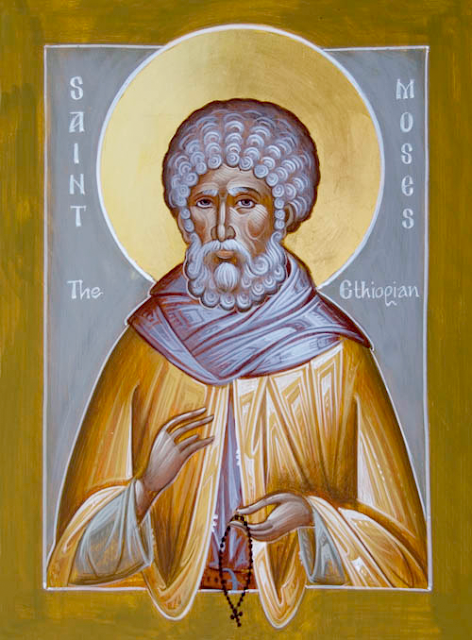
After many years of monastic struggles, St. Moses was ordained deacon. In his humility, he believed himself unworthy of this office. Once, wishing to test him, the bishop told the clergy to insult and ridicule him as an unworthy Ethiopian, and to drive him out of the altar. The humble monk accepted the abuse. After this test, the bishop then ordained St. Moses as a priest. He was sixty years old at this time. For another fifteen years he continued his monastic labors, and about 75 disciples gathered around the saintly Elder, who had been granted by the Lord the gifts of wisdom, foresight, and power over demons. When he was 75, he warned his monks that soon brigands would attack their small monastery (skete) and murder everyone. He begged his monks to leave, but he himself refused to leave, because he believed the time had come for the Lord’s words to be fulfilled: “All who take up the sword shall perish by the sword” (Mt. 26:52). Seven brethren stayed with their Abba, one of whom hid when attacked, and lived to tell how the robbers killed St. Moses and the other six monks. It was about the year 400.
By Sister Ioanna, St. Innocent Monastic
Community, Redford, MI
